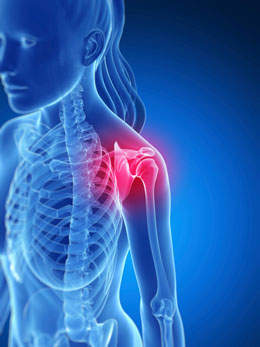Torn labrum is also called labral tear. It may occur in two forms: hip labral tear and shoulder labral tear. Here is a read on both these medical conditions.

Hip Forecast!
Experts at the AAOS (American Academy of Orthopaedic Surgeons) estimate that by the year 2050, a whopping 650,000 cases of hip fractures may come up in the United States.Labrum is a cartilage and connective tissue that is present in the shoulder joint and hip joint. Both these joints are ball and socket joints, and the labrum helps stabilize them. Certain factors can cause the labrum to tear and give rise to a range of painful symptoms. Hip labral tear and shoulder labral tear are the common forms of this condition.
What Causes Hip Labral Tear?
Also known as acetabular labral tear, this condition is commonly caused by:
» Trauma to the hip (car accidents, sports injury, falls, etc.)
» Repetitive activities that involve hip movements (activities like golf, soccer, ballet, hockey, etc., which cause external hip rotation)
» Abnormalities in the hips (femoroacetabular impingement and hip dysplasia are common examples)
» Osteoporosis (in some cases, this condition has been linked to hip labral tear)
The Symptoms
There could be cases where the injury does not show any symptoms whatsoever. But symptoms which do occur are as follows:
☛ Most athletes experience pain in their groin when they tear their hip labrum.
☛ In some cases, the tearing causes an audible clicking or locking sound.
☛ With time, the problem worsens with weight-bearing and hip twisting activities.
☛ The affected person can feel weakness and instability in his/her hip.
Treatment
An acetabular labral tear is first treated with conservative methods which include anti-inflammatory medicines (NSAIDs), and physical therapy. Surgery is reserved for people who do not respond to these treatment options. Depending on the severity, the surgeon either removes the damaged labrum or repairs it. The surgery is an arthroscopic surgery and is minimally invasive. Patients are also recommended to undergo physical therapy post surgery. Note that, such surgery may not be helpful for people with structural abnormalities in their hip.
What Causes Shoulder Labral Tear?
Shoulder labral tear is also known as glenoid labrum tear. It is mainly caused by:
» Shoulder injury (breaking a fall with your shoulder, direct blow to the shoulder, etc.).
» Heavy weightlifting, golfing, pitching or catching heavy objects, particularly when done with sudden or rapid movements (such actions cause biceps to contract rapidly against the labrum).
» Repetitive movements (common examples include swinging a racquet, striking a hammer, axing woods, overhead throwing, etc.).
» Muscle weakness or instability in the shoulder joints.
The Symptoms
Some cases do not show any noticeable symptoms, while some which do may include the following:
☛ As it is in the case of the hip, such injury in the shoulder also causes a clicking or locking sound.
☛ The affected person may experience pain in the front or top of his/her shoulder.
☛ Indulging in overhead activities may worsen the pain.
☛ The affected shoulder's range of motion is restricted, and so its strength and stability.
Treatment
Shoulder labrum may tear in different ways. In one case, the tear may occur at the top of the shoulder. In another case, the labrum tears when the shoulder dislocates. And there are cases wherein this connective tissue and the rotator cuff start pressing tightly against each other at the back of the shoulder. This, however, is a rare scenario that occurs in athletes.
So depending on the kind of tear, the treatment is decided. Conservative treatment methods such as medicines and rest are given first preference. Rehabilitation exercises may also be recommended. But if such methods do not help, then arthroscopic surgery is usually the next step.
Minor cases of labrum tear usually respond to conservative treatment, and people recover in about 2-6 weeks. People who do undergo surgery but for minor tears recover within 4-8 weeks. But moderate to severe cases of the same condition require a relatively longer healing period.
Disclaimer:
The information provided in this article is solely for educating the reader. It is not intended to be a substitute for the advice of a medical expert.


